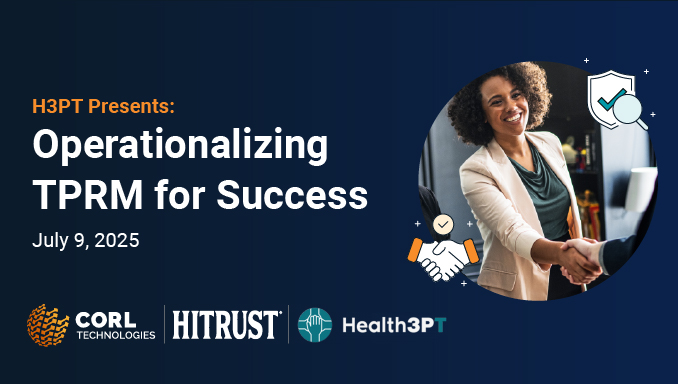
BlogTPRM
Top 10 Healthcare Supplier Risk Management Challenges Facing Providers in 2025
3 Minute Read
Read Top 10 Healthcare Supplier Risk Management Challenges Facing Providers in 2025TPRM
By CORL Technologies | February 1, 2022
Third-party risk management breaches have been snowballing in recent months with no clear end in sight. However, too many healthcare organizations have maintained a status quo approach to their Third-Party Risk Management (TPRM) and Vendor Risk Management (VRM) programs.
As the saying goes, “insanity is doing the same thing over and over and expecting different results”. It’s time for healthcare entities to make major investments in the people, process, and technology required to meaningfully reduce risks introduced by third-party vendors. Those investments often require the buy-in of multiple stakeholder groups within the organization in order to release the funding and political will power necessary to effectively address third-party risk management.
This blog provides recommendations for delivering messaging to key stakeholder groups within healthcare entities to make the business case for further investments in third-party risk programs.
The good news is that most healthcare boards in 2022 have some degree of awareness of third-party risks as a result of the litany of stories peppering the news for supply chain breaches. However, awareness does not always translate into funding and prioritization.
Here are some key messages to help convey the urgency and necessity of investing in third-party risk programs:
In addition to the points provided above for board and committee-level stakeholders, the following considerations and talking points can be leveraged with CIO and CISO stakeholders to obtain support and buy-in for your TPRM program.
Third-party vendors have access to staggering amounts of sensitive information including Protected Health Information (PHI). Vendor breaches can introduce material legal and compliance consequences for healthcare entities. Some examples of regulatory, compliance, and legal impacts may include:
The following resources can help you outline specific legal and compliance challenges, costs, and remedies for third-party risk management:
Lengthy vendor security reviews are costing businesses time and money and generating frustration on all sides. Third-party risk management teams are unable to keep pace with the break-neck speed at which business operates.
As a result, Security teams can often be viewed as an obstruction to the business and procurement cycles. Key messaging to procurement stakeholders should explain how investments in your third-party risk management capabilities will increase throughput and speed so the business can operate with minimal friction from vendor security risk assessments.
Here are some specific points to make with procurement stakeholders:
A good resource to reference when speaking with procurement stakeholders is CORL’s infographic: The Need for Speed in Vendor Risk Assessments.
You are not alone. CORL’s team of third-party risk management experts can help you obtain buy-in across the organization for your TPRM program. Here are some points that can be shared to help qualify our opinion and help you gain support for your TPRM program:
Third-party risk management exposures are not going away any time soon. Hopefully these talking points can help you get the necessary conversations moving forward to obtain buy-in for investments in your third-party risk management program.
Contact our team here at CORL to learn more about our managed services and next generation exchange for healthcare vendor risk data that gets results and lowers third-party risks.
 CORL Technologies
CORL Technologies
CORL transforms TPRM chaos into clarity
CORL is a leading provider of vendor risk management solutions for the healthcare industry. CORL gets results by scaling organizational and vendor risk programs through our healthcare vendor risk clearinghouse solution, dashboard reporting that business owners can understand, and proven workflows that drive measurable risk reduction. CORL accelerates the speed of vendor risk assessments and holds vendors accountable for remediating risk exposures.
Related Posts

BlogTPRM
By CORL Technologies | August 14, 2025
3 Minute Read
Read Top 10 Healthcare Supplier Risk Management Challenges Facing Providers in 2025BlogCompliance
By CORL Technologies | June 24, 2025
5 Minute Read
Read Unlocking Vendor Assurance: A Deep Dive into CORL Technologies’ Assessment Suite
BlogTPRM
By CORL Technologies | May 19, 2025
2 Minute Read
Read More Than a Checkbox: Why Right-Sizing Vendor Risk Remediation Is the Key to Smarter TPRM
Webinars
WEBINAR H3PT Presents: Operationalizing TPRM for Success Join us for a focused, real-world conversation with healthcare security and risk leaders tackling today’s most pressing TPRM challenges. This session will bring together a small panel of experts for an insightful discussion on how to strengthen third-party risk programs in an evolving threat landscape. This won’t be […]